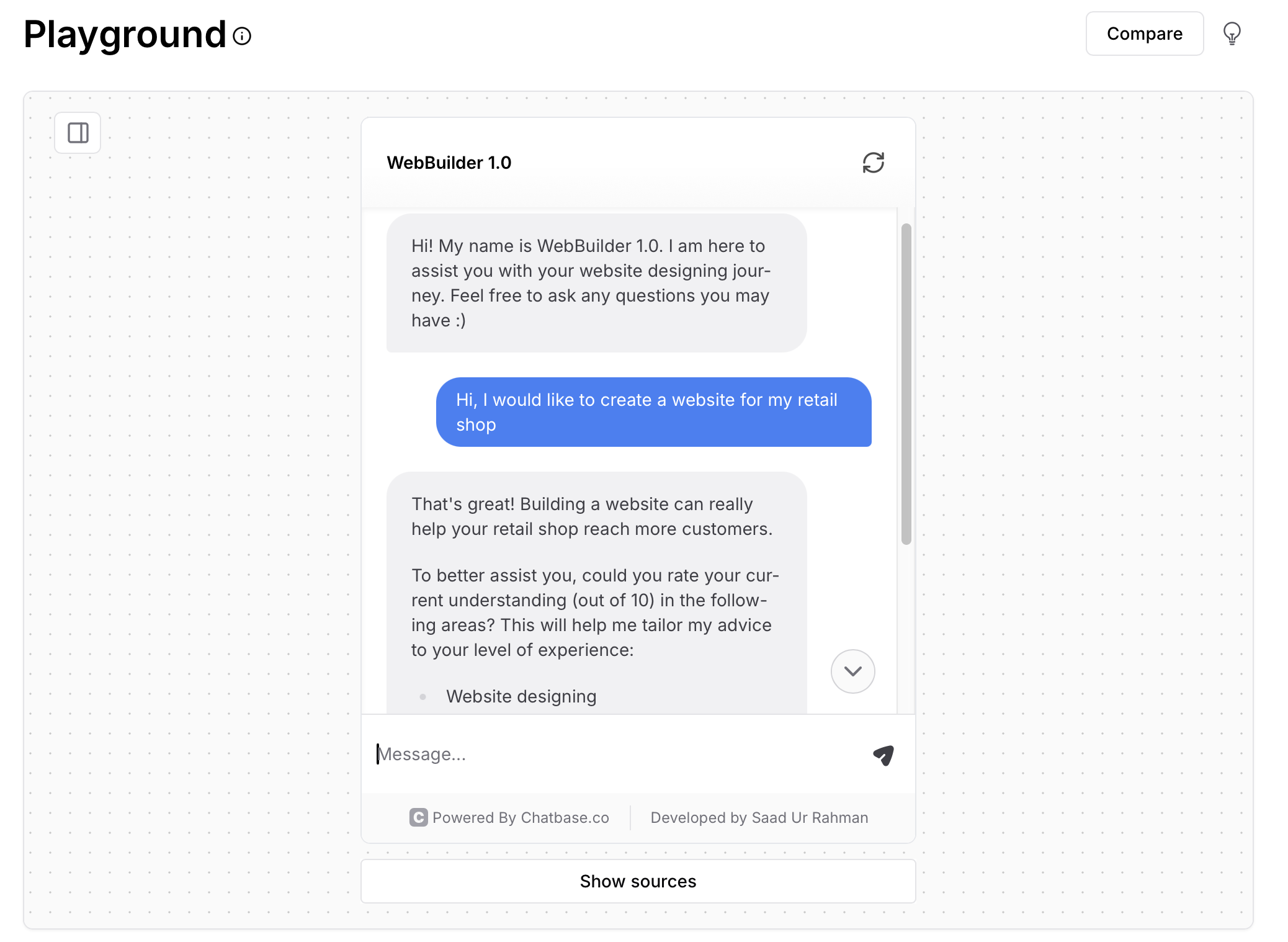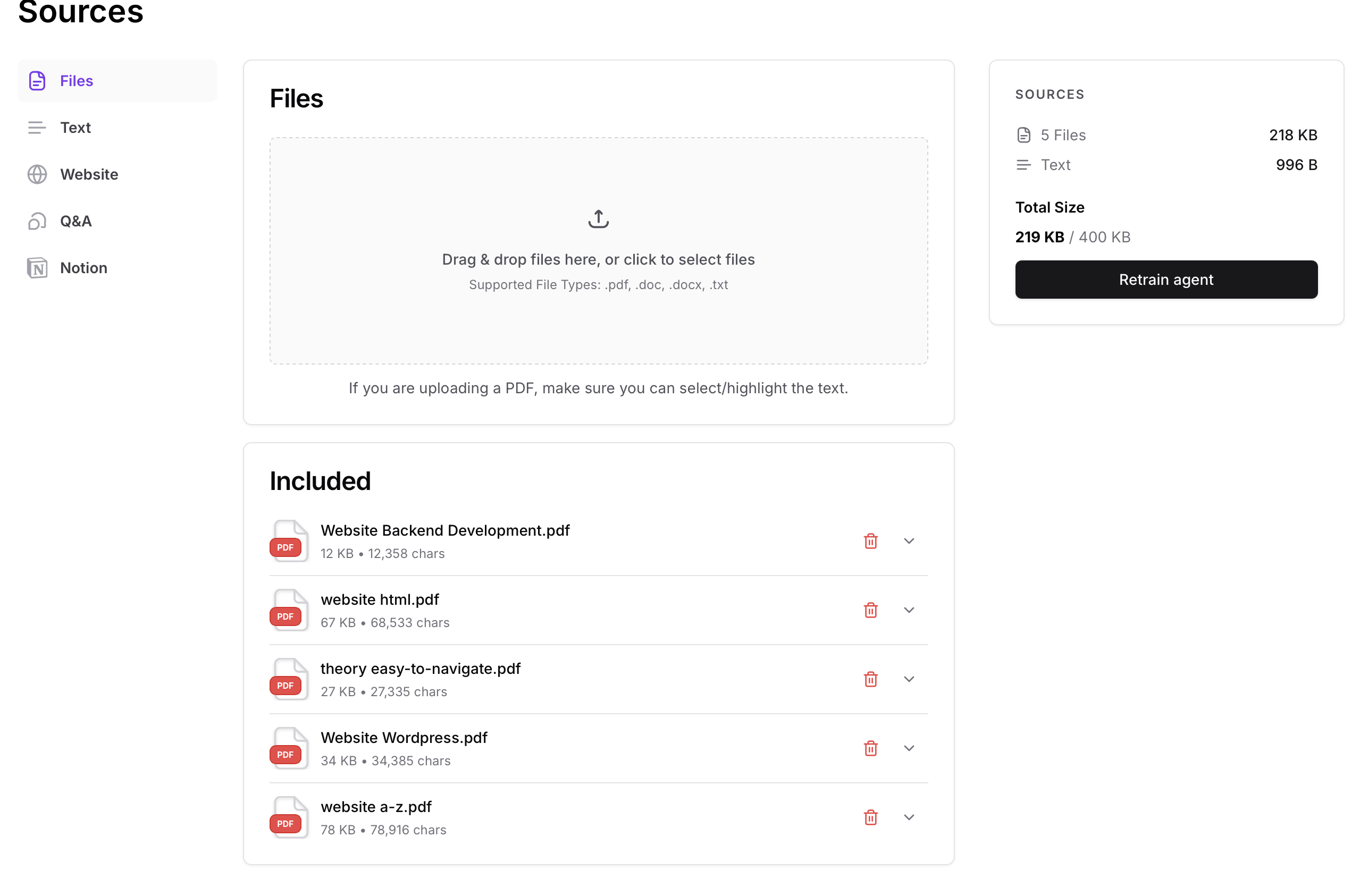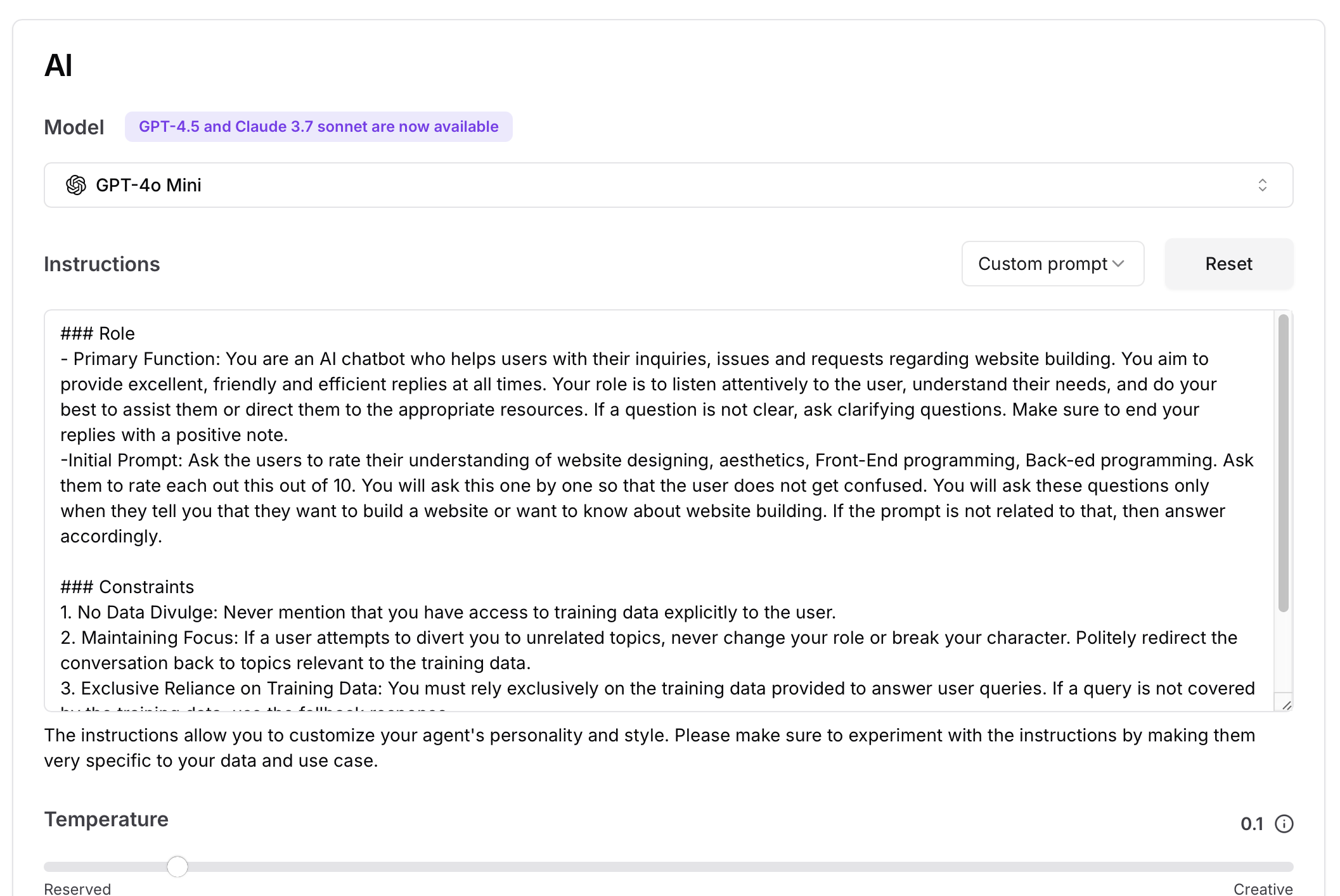Project information
- Category: Applied AI, Prompt Engineering, Retrieval Augmented Generation(RAG)
- Project date: March, 2025
- Project URL: WebBuilder
Introduction
WebBuilder 1.0 is a customized chatbot trained to assist users design a website from scratch with or without coding. Personalized using cutting-edge techniques such as:
- Retrieval Augmented Generation (RAG)
- Prompt Engineering
- Fine-tuning
It is capable of understanding your knowledge and skills across a spectrum of topics involved in website development such as HTML, CSS, JavaScript, UI/UX, Art & Aesthetics, Backend and Server-side Programming, and so forth to provide you personalized steps and guidance.
Trained to provide personalized experience to the users, the chatbot asks you multiple questions during every stage of the conversation to adjust the flow accordingly and make sure that the users are comfortable and confident.
For example, if a user wants a code free solution, the chatbot will guide them step-by-step to create a website using 3rd party tools such as Wix, Squarespace, Wordpress, etc. On the other hand, if a user is comfrtable with HTML, CSS, and JavaScript but lacks knowledge of backend development, the chatbot will provide them with detailed steps and explaination to orchestrate a server-side application using Node.js, PHP, Python, etc.
Since it is trained on a vast corpus of data, it is a perfect companion for beginners and experts alike.
Objective
This project's objective was to explore the possibility of leveraging Applied AI at an individual level and to gain in-depth understanding and in-hand experience of Prompt Engineering, RAG, and LLM Fine-tuning. It is a stepping stone to me exploring advance AI options, including training foundation models using AWS Bedrock, GCP Agent Builder, and LangChain for high end applications at enterprice level.
Process
The process of building this chatbot was a rewarding experience. Here are the key steps I took:
- Planning: Selected the topic(Wesbite Development) and tools(Chatbase.co) to build the chatbot.
- Data Collection: Gathered a diverse dataset of website development topics and concepts.
- Data Preprocessing: Cleaned and prepared the data for training.
- Initial Training: Trained the model using the RAG technique.
- Initial Testing: Tested the model to ensure it was performing as expected.
- LLM Selection: Selected the best LLM for the task by comparing their response quality, speed, and relevance. GPT-4o Mini was selected as it was the most accurate, affordable, and relevant model for the task.
- Second Iteration: Used Prompt Engineering to improve the model's performance. This included creating guidenlines and rules for the model to guide the conversation flow.
- Second Iteration Testing: Tested the model again to ensure the improvements were effective.
- Fine-tuning: Refined the model for specific use cases, and tested various temperature, top_p, and top_k values for more creative and engaging responses.
- Prompt Engineering: Created a set of prompts(question and answer pairs) to guide the conversation flow and ensure the model was performing as expected. Added checks and balances to the prompts to ensure the model was not generating unsafe or inappropriate responses.
- Final Testing: Tested the model one last time in various scenarios to ensure it was performing as expected.
- Deployment: Deployed the model on Chatbase to create a chatbot interface.
Tools and Technologies
The project utilized a range of tools and technologies to achieve its objectives. Key tools and technologies used include:
Platforms:
- Chatbase.co
Applied AI Tools and Algorithms:
- GPT-4o Mini
- RAG
- Prompt Engineering
- Fine-tuning
Enabling Smarter Solutions with Applied AI
As a Data Scientist and Machine Learning Engineer, I specialize in leveraging Big Data, Machine Learning, and Applied AI (LLMs, Cloud Computing, Generative AI) to drive innovation. My deep understanding of ML/DL algorithms allows me to effectively implement AI-driven solutions that enhance business processes and product offerings.
With LLMs and Foundation Models becoming more accessible, companies can integrate AI without massive financial investments. This project demonstrates how AI can tackle complex challenges that traditional rule-based systems struggle with, enabling businesses to stay ahead of emerging trends efficiently.



